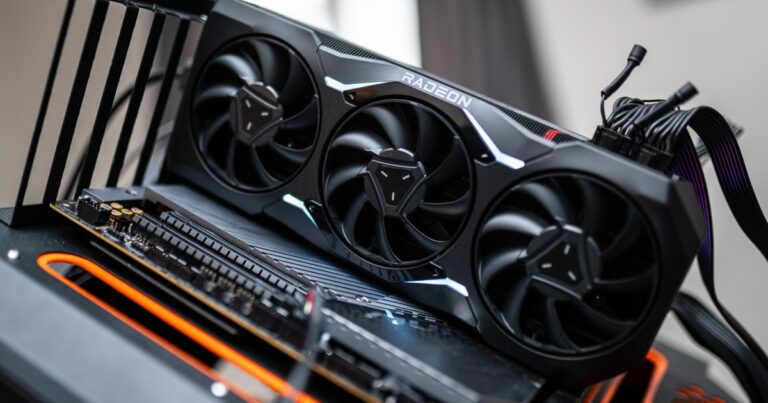
An interesting AMD patent has recently come to light, and although it’s been filed for a while, it’s all the more exciting to have found it now, as the technology could soon make its way into future graphics cards. The patent describes a multi-chiplet GPU with three separate dies, which could improve performance and reduce manufacturing costs.
In the patent, AMD mentions that the GPU is split into multiple dies, which they call GPU chiplets. These chiplets, or dies, can work together as one GPU, or as multiple GPUs, which AMD calls “second mode.” The GPU has three modes in total, with the first mode having all the chiplets working together as one unified GPU. This allows for resource sharing, and as Tom’s Hardware puts it, allows the front-end die to handle command scheduling for all the shader engine dies, which is similar to how a typical non-chiplet GPU works.
The second mode is where things get interesting. In this mode, every chiplet counts as an independent GPU. Each GPU handles its own task scheduling within the shader engine and does not interfere with other chiplets. Finally, the third mode is a combination of the two, where some GPUs act as their own entities and others combine chiplets to work together.
As mentioned, this patent is not new. It was filed on December 8, 2022, shortly after AMD released the RX 7900 XTX and RX 7900 XT. The leaker predicts that AMD may continue down the multi-chiplet path for at least a generation or two, but the architecture is currently only really used in AMD’s datacenter GPUs. However, AMD is already working on similar technology with RDNA 3, with a design that uses a Graphics Compute Die (GCD) and multiple Memory Cache Dies (MCMs) for the memory interface.
A weekly analysis of the technology behind PC games
According to the patent, switching to this type of architecture would offer tangible benefits: “By splitting the GPU into multiple GPU chiplets, the processing system flexibly and cost-effectively configures the amount of active GPU physical resources based on the operating mode. ” If it turns out to be cheaper to manufacture this type of GPU than using increasingly large monolithic dies, we may start seeing this design outside of data centers and in the GPUs that we all use in our computers.
Early leaks about RDNA 4 graphics cards have suggested that AMD will employ a full multi-chiplet design, and it’s not hard to imagine that the end result could end up looking similar to what we see in the patent. However, with the news that AMD will stick to mid-range graphics cards in the next generation, any hopes of multi-chiplet GPUs seem to be lost for now. Perhaps we’ll see this design come to fruition in RDNA 5.
Editor’s Recommendation

